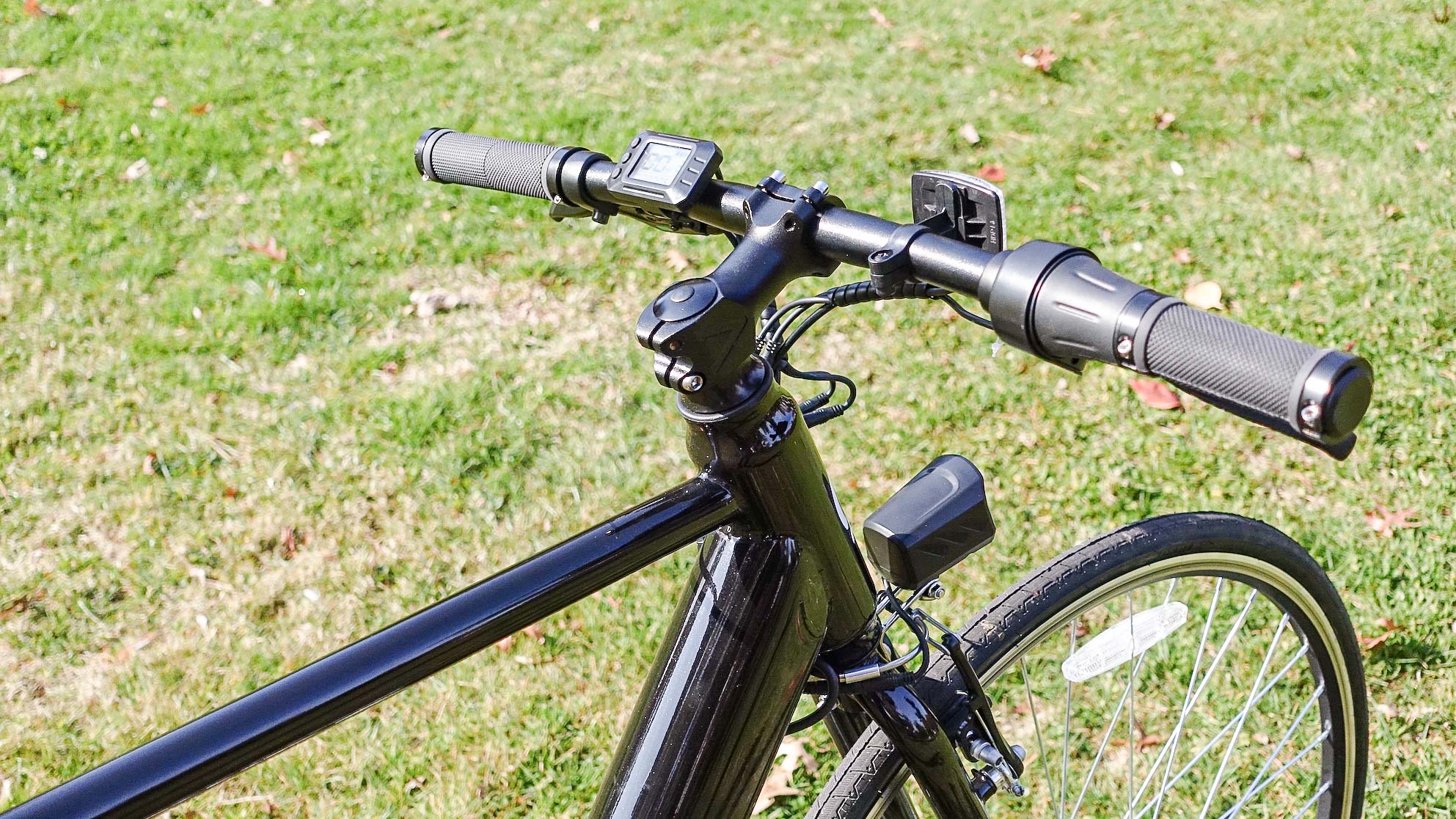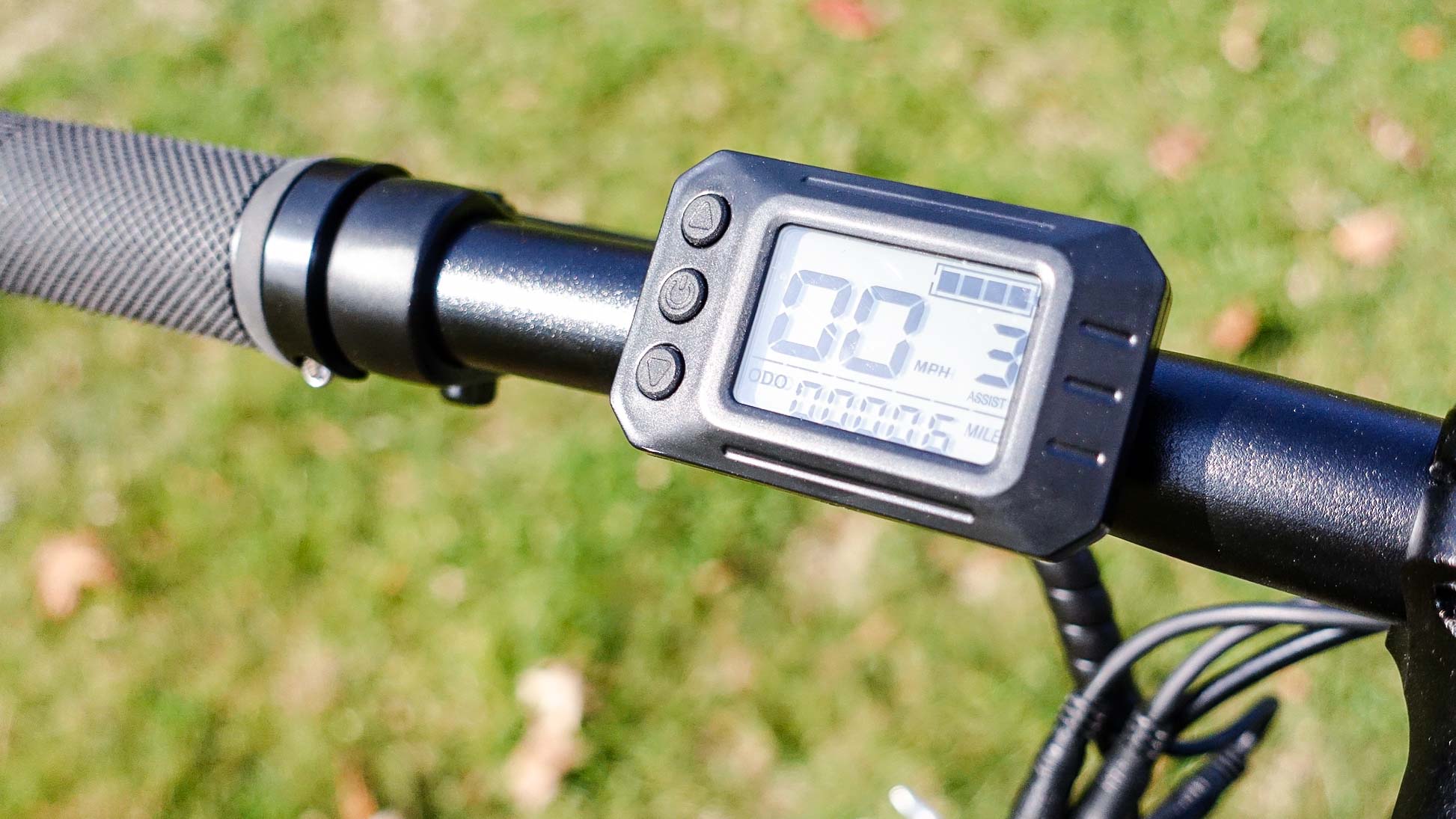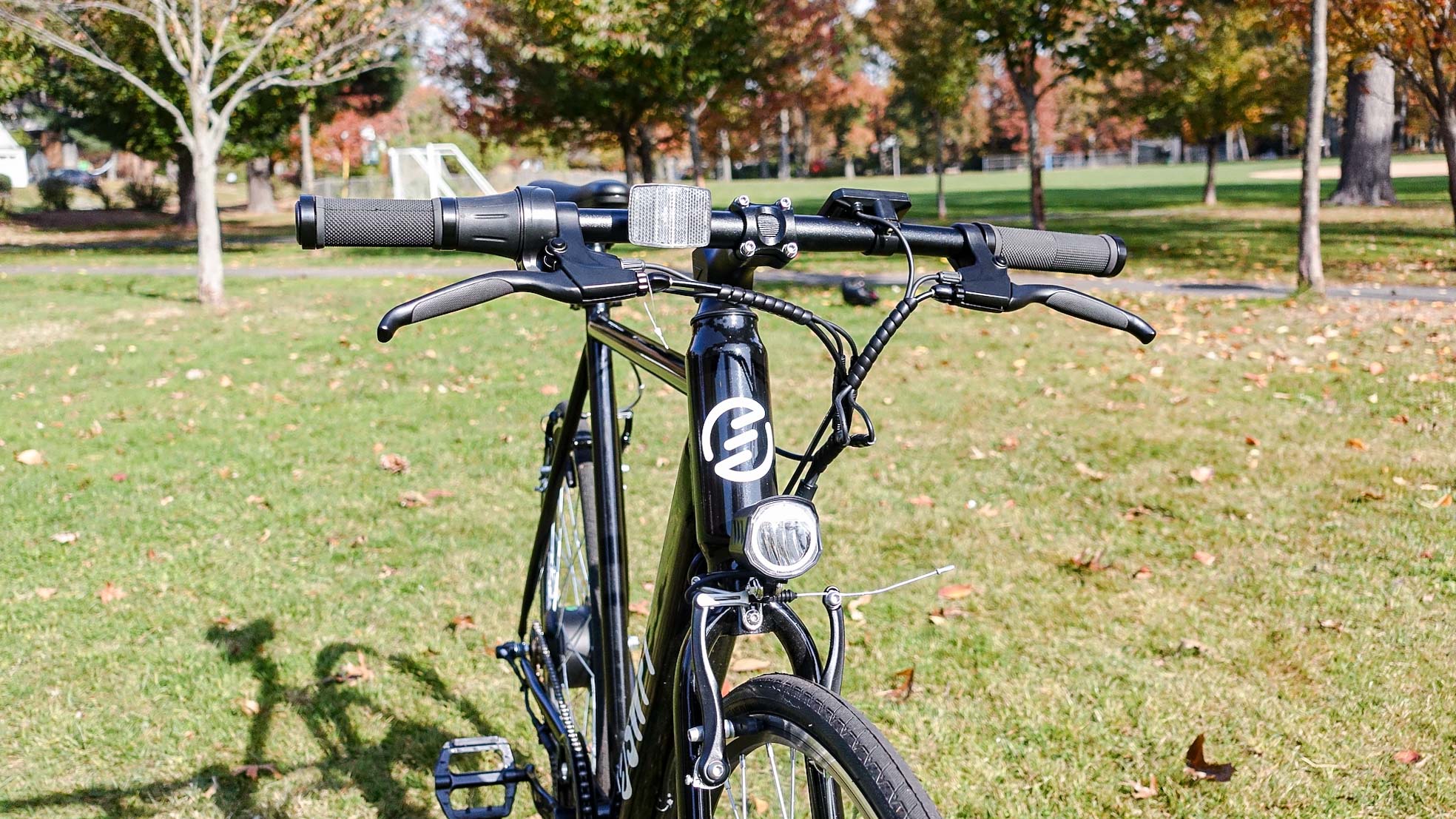Tom's Guide Verdict
The Swft Volt is a good electric bike that costs less than $1,000.
Pros
- +
Inexpensive for an electric bike
- +
Responsive throttle
Cons
- -
Non-removable battery
- -
Basic display
Why you can trust Tom's Guide
Size: 69.7 x 39.4 x 24.6 inches
Weight: 44.1 pounds
Motor: 350W
Battery: 10Ah, 36V
Range: 32 miles
Max speed: 19.8 MPH
Max rider weight: 220 pounds
Tire size: 27 x 1.1
The Swft Volt looks to break down one of the biggest barriers to electric bike adoption: They’re just too expensive. With a starting price of $999, the Volt is a lot cheaper than most other ebikes, which can easily start at twice the price, yet delivers a solid ride for the price. However, with a lower price comes a few compromises. Read the rest of our Swft Volt review to see if those tradeoffs are worth it for you, and how it compares to some of the best budget electric bikes we’ve tested.
Swft Volt review: Price and availability
The Swft Volt went on sale in the fall of 2021, and costs $999, though you can find it for less during the holiday season.
Swft Volt review: Design
The Volt is designed as a road bike, with the rider in a forward-leaning position. The company also says that it’s best for people who are 5’ 10” and taller. If you’d prefer a more laid-back bike — or if you’re not as leggy — the Swft Fleet (also $999) is built in the beach-cruiser style, and is meant for riders 5’7” and up. That’s still pretty tall, though.

From the outside, the Volt looks like any other bike, albeit one with a much thicker downtube; the bike’s battery is hidden there, but unlike the Fleet and some other electric bikes (including the Swft Fleet), it’s not removable. Swft keeps the Volt’s wires hidden fairly well; you wouldn’t necessarily know this is an e-bike just by a quick glance. The Volt’s throttle is a simple grip-twist built into the right handlebar.

The Volt’s display, while functional, is much smaller than you’ll find on other ebikes. Still, you get the basics: Speed, distance traveled, and battery life remaining, plus, it lights up automatically in the dark. Buttons let you adjust the level of pedal assistance you want, and turn the bike’s headlight on and off.

The Volt is a fixed-gear bike — no shifting here — which is one of the compromises you’ll need to make. Unlike pricier electric bikes, such as the Rad City Rad 5 Power, which have a 7-gear shifter, you’re going to struggle to get the Volt going uphill without pedal assist or the throttle.
Swft Volt review: Assembly
Unlike other electric bikes I’ve tested, the Volt needed a bit more work to get up and running. For one, the front brakes were misaligned, and the wheel was also slightly out of balance. I have a bit of experience adjusting these things, but those unfamiliar with bikes may need to bring it to a shop to get it fine-tuned.

From there, it was just a matter of charging the battery (it takes 6 hours to go from empty to full), strapping on one of the best bike helmets, and then off I went.
Swft Volt review: Performance
Unlike pricier electric bikes which use cadence sensors to incrementally adjust the level of assistance, the Volt merely senses when the crank is turning, and applies power. It definitely took a little more work at the outset than other electric bikes I’ve tested, but once I got going, the Volt provided steady power throughout my ride.

For the most part, I used pedal assist, but would activate the throttle when starting, going through intersections, or heading uphill. The Volt’s 350W rear hub motor was up for most tasks, but struggled a bit on inclines, where I would slow down to around 6-7 miles per hour.

Contrast that with the Van Moof S3 and Rad Power RadCity 5, which powered me up hills with aplomb. The Volt’s motor was also a bit noisier than on pricier ebikes; while it’s not obnoxious, you do hear a whine when using the throttle.

Overall, though, I found the Volt to be a pretty enjoyable ride. There’s no shock absorbers, and coupled with the bike’s relatively thin tires, you’ll definitely feel the bumps. Still, my only real gripe was with the handlebar grips, which dug into my palms a bit too much for my liking. That’s easily resolved, though.
Swft Volt: Battery life and range
The Swft Volt has a 10 Ah, 36V battery that the company says is good for up to 32 miles of range — not spectacular, but not horrible given the bike’s price. I rode the bike at the top power-assist level and used the throttle on bigger hills and when starting, and estimate that in my use, I’d get around 20 miles before needing to recharge it.
Swft Volt: Competition
On Amazon, you can find a number of electric bikes that cost less than $1,000, but the majority are from no-name companies and have somewhat clunky designs.
Among more reputable brands, the Rad Power RadMission 1 also costs $999, comes in a variety of colors, and has a removable battery. It also has a larger, 48V, 10.5 Ah battery, and a 500W geared hub motor; like the Swft Volt, it’s also a single-gear bike.
If you’re looking for something more compact, the Lectric XP 2.0 also comes in under $1,000, and can fold up; however, it’s pretty heavy for its size.
Swft Volt review: Verdict
It’s only a matter of time before ebikes become more affordable, but the Swft Volt is one of the first to break the $1,000 barrier. Like the Lectric XP 2.0, the Volt is made for budget-conscious riders, so you won’t get niceties like hydraulic brakes, full suspension, and color displays. But for the price, who cares so long as it delivers a good ride?
When Swft offered to send me one of its bikes to test, I opted for the Volt, as it looked sleeker. However, I think a majority of riders may prefer the Swft Fleet as it has a longer range (37 miles), removable battery, and a more powerful 500W motor. Plus, its beach cruiser configuration, which lets you sit up straighter, will make it more enjoyable while you’re pedaling around town.

Michael A. Prospero is the U.S. Editor-in-Chief for Tom’s Guide. He oversees all evergreen content and oversees the Homes, Smart Home, and Fitness/Wearables categories for the site. In his spare time, he also tests out the latest drones, electric scooters, and smart home gadgets, such as video doorbells. Before his tenure at Tom's Guide, he was the Reviews Editor for Laptop Magazine, a reporter at Fast Company, the Times of Trenton, and, many eons back, an intern at George magazine. He received his undergraduate degree from Boston College, where he worked on the campus newspaper The Heights, and then attended the Columbia University school of Journalism. When he’s not testing out the latest running watch, electric scooter, or skiing or training for a marathon, he’s probably using the latest sous vide machine, smoker, or pizza oven, to the delight — or chagrin — of his family.

